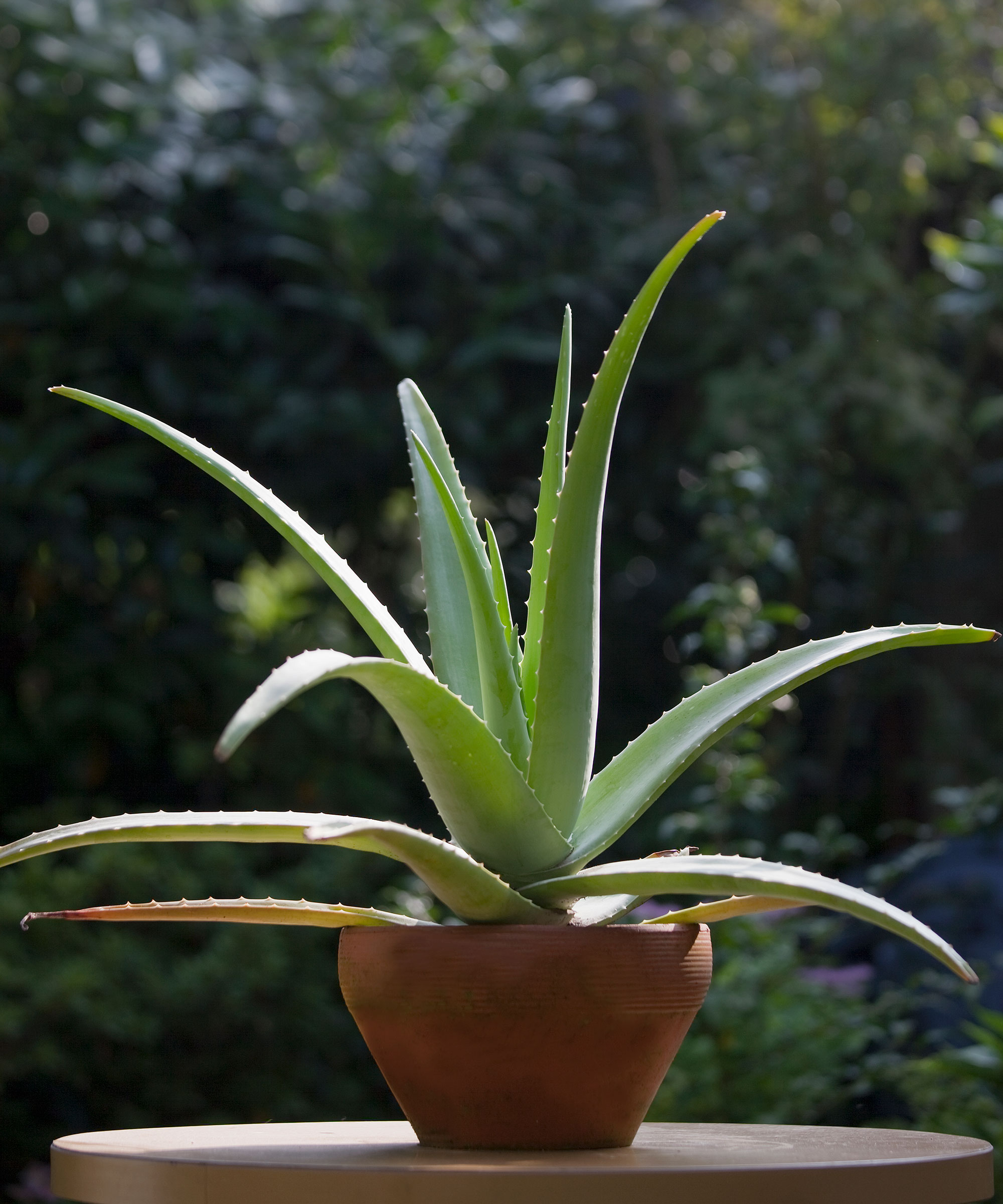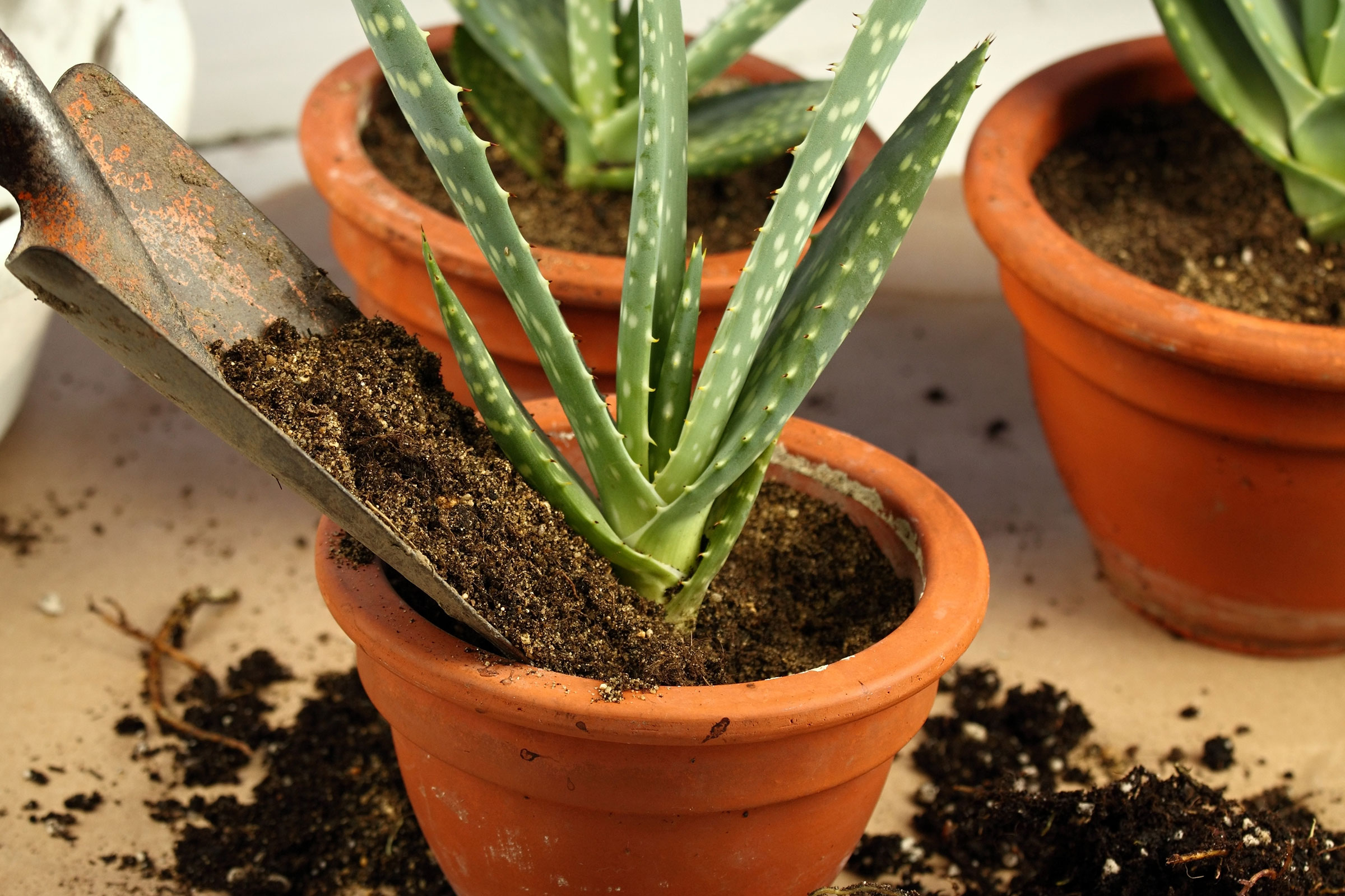How to grow and care for Aloe vera plants: indoors and out
A favorite succulent of so many households, learning how to grow and care for Aloe vera plants is essential to keep yours happy and healthy – whether you keep them in pots or out in the yard.

Anna K. Cottrell

One of the best-loved succulent plants kept on people's windowsills or out in the yard since what feels like the beginning of time, knowing how to grow and care for Aloe vera plants is easier done than you may think.
Aloe vera plants (or Aloe barbadensis to use its official name) have been grown for thousands of years. It originates from some of the hottest driest regions of the planet, and as a succulent, it stores water in its long, spiky, fleshy leaves, meaning it’s incredibly easy look after. What’s more, as a medicinal plant, the gel-like sap can be used to treat everything from burns and skin problems to insect bites. It's pretty low-maintenance, and the only real issue people have with it is overwatering.
The good news is, depending on where you live in the world, it can make one of the best indoor plants or do very well outside, as these horticulturalists and plant experts explain…
Where should I grow my Aloe Vera?
Aloe veras are full sun plants when kept outdoors, although they are fine in part shade also, says Adam Farrell-Wortman, Director of Horticulture at Tucson Botanical Gardens in Arizona. ‘Most aloe plants are frost sensitive, however Aloe Vera is the hardiest, so it can take a mild frost, just nothing prolonged below freezing. When you buy a plant, the tag should tell you the cold zone it can handle, so take that as your guide.’
Kate Turner, gardening expert at Lovethegarden.com agrees, saying that aloe veras enjoy temperatures of 20-25ºC but won’t thrive at temperatures lower than 10ºC. So, if you live in a country where winter frosts are a common occurrence, it’s better kept as a houseplant, in bright indirect light, with the occasional period outside in the summer months. Alternatively, she suggests keeping it in a pot rather than in the ground. ‘Growing aloe outdoors in the UK is tricky, but you could give it a try if you live in the south of the country, and it is planted in really gritty soil,’ she explains. ‘Aloes hate winter wet, so I would recommend planting in a large terracotta pot that you can move indoors (or into your greenhouse) in the autumn.’
Turner adds how if you have aloe in pots at home already, ‘In the summer, your aloe vera can go on ‘holiday’ to your back yard if it’s placed in a warm, sunny spot,’ she says. ‘Just remember to bring it back inside before the weather cools ahead of winter.’

How to grow aloe vera plants
‘Aloe vera plants can reach heights of 60cm,' says Turner. ‘It will spread by suckering, but this can be limited by removing the pups or offshoots to plant elsewhere, or by keeping it in a pot.’
Get small space home decor ideas, celeb inspiration, DIY tips and more, straight to your inbox!
‘If your plant is in a pot, it’s up to you whether you want to keep the baby plants that appear around the edge of the plant, so that they fill the pot entirely and you have a bushy-looking effect; or if you want to take them out and repot them,’ says Farrell-Wortman.
The best way to propagate succulents like aloe vera is from an offshoot. All you do is gently separate the offshoot from the main plant and pot it up. If you don't know anyone with a mature aloe vera plant, you can buy aloe vera plants online.
When removing pups, pull or cut them off the parent plant, then re-plant them in a gritty soil specially formulated for succulents, such as Miracle-Gro Cactus and Bonsai Peat-Free Compost, inside a new pot, preferably made of terracotta, which helps any excess moisture in the soil to evaporate.
You can also make your own by mixing equal parts all-purpose compost, vermiculite, and sand. The point is to have open, well-draining soil.
Avoid plastic pots and ensure there are drainage holes then position your planted aloe pups on a window sill or somewhere that gets plenty of bright light.

When should I water my aloe vera plant?
It’s always better to under-water rather than over-water an aloe vera, says Farrell-Wortman: ‘One of the biggest mistakes people make with aloe veras is keeping the soil moist. Succulents like to dry out first. This is because they’ve evolved to take in water whenever it’s available. Eventually, if you water it too much, the leaves will start to split, or the plant will lose its colour and begin to rot.’
As a houseplant, water your aloe vera once every one or two weeks in the summer, and even less in winter. In warmer climes, when planted in the ground outside, experts say to let the weather be your guide. ‘Most of the time, your aloe veras can take water from the natural rains,’ says Liam Anderson, who manages the arid section of the glasshouses at RHS Wisley Gardens. ‘In a hot summer or a drought, if you’re really worried, you can water it once or twice a week, giving the ground around it a good soak. But otherwise, let your plant get on with it!’
How to harvest aloe vera gel
If you're growing aloe for its skin-healing gel, you'll need to wait until the leaves are thick and juicy enough to make it worth your while harvesting the gel. You also don't want to harvest the entire plant, obviously, so wait until it's grown quite big and only harvest a few leaves at a time.

When collecting aloe vera sap, take one of the older leaves, lower down the plant, says Farrell-Wortman: ‘Don’t pick at the heart of the plant, leave the upper and centre leaves, as you would when picking greens. Try to get to the very bottom of the leave, where it joins the main stem, and pull or peel it off. If that’s hard, cut it off. Don’t worry if the stump ‘bleeds’ a little, it will heal up.’

Jenny has been a features and lifestyle journalist for over 20 years and writes about homes and gardens for national newspapers and magazines such as the Daily Mail, Good Homes and Easy Gardens as well as for Realhomes.com. When not writing about homes, she’s helping redecorate them as an interior designer at Decorbuddi.com, tackling everything from bedroom revamps to kitchen renovations. Jenny believes you can never have too much colour, cushions or cacti, and has a particular soft spot for terrazzo.